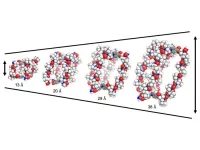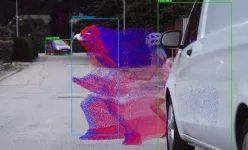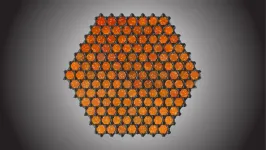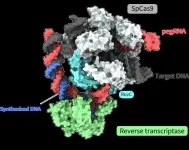AI saving humans from the emotional toll of monitoring hate speech
Researchers use machine learning to identify hate speech with 88 per cent accuracy
2024-05-29
(Press-News.org)
A team of researchers at the University of Waterloo have developed a new machine-learning method that detects hate speech on social media platforms with 88 per cent accuracy, saving employees from hundreds of hours of emotionally damaging work.
The method, dubbed the Multi-Modal Discussion Transformer (mDT), can understand the relationship between text and images as well as put comments in greater context, unlike previous hate speech detection methods. This is particularly helpful in reducing false positives, which are often incorrectly flagged as hate speech due to culturally sensitive language.
“We really hope this technology can help reduce the emotional cost of having humans sift through hate speech manually,” said Liam Hebert, a Waterloo computer science PhD student and the first author of the study. “We believe that by taking a community-centred approach in our applications of AI, we can help create safer online spaces for all.”
Researchers have been building models to analyze the meaning of human conversations for many years, but these models have historically struggled to understand nuanced conversations or contextual statements. Previous models have only been able to identify hate speech with as much as 74 per cent accuracy, below what the Waterloo research was able to accomplish.
“Context is very important when understanding hate speech,” Hebert said. “For example, the comment ‘That’s gross!’ might be innocuous by itself, but its meaning changes dramatically if it’s in response to a photo of pizza with pineapple versus a person from a marginalized group.
“Understanding that distinction is easy for humans, but training a model to understand the contextual connections in a discussion, including considering the images and other multimedia elements within them, is actually a very hard problem.”
Unlike previous efforts, the Waterloo team built and trained their model on a dataset consisting not only of isolated hateful comments but also the context for those comments. The model was trained on 8,266 Reddit discussions with 18,359 labelled comments from 850 communities.
“More than three billion people use social media every day,” Hebert said. “The impact of these social media platforms has reached unprecedented levels. There’s a huge need to detect hate speech on a large scale to build spaces where everyone is respected and safe.”
The research, Multi-Modal Discussion Transformer: Integrating Text, Images and Graph Transformers to Detect Hate Speech on Social Media, was recently published in the proceedings of the Thirty-Eighth AAAI Conference on Artificial Intelligence.
END
ELSE PRESS RELEASES FROM THIS DATE:
2024-05-29
A new method of drug delivery using proline, an amino acid found in chicken feathers and skin tissue, could be used to limit the side effects of chemotherapy and repair important enzymes, new research suggests.
Published in the journal Chem today, researchers have designed a cage (a box made of single molecules) from biologically compatible peptides, short amino acids that form the basis of proteins. These cages can house drugs of different sizes and transport them in the body with high levels of precision.
The negative ...
2024-05-29
It’s every driver’s nightmare: a pedestrian stepping out in front of the car seemingly out of nowhere, leaving only a fraction of a second to brake or steer the wheel and avoid the worst. Some cars now have camera systems that can alert the driver or activate emergency braking. But these systems are not yet fast or reliable enough, and they will need to improve dramatically if they are to be used in autonomous vehicles where there is no human behind the wheel.
Quicker detection using less computational ...
2024-05-29
Graphene has been called “the wonder material of the 21st century.” Since its discovery in 2004, the material—a single layer of carbon atoms—has been touted for its host of unique properties, which include ultra-high electrical conductivity and remarkable tensile strength. It has the potential to transform electronics, energy storage, sensors, biomedical devices, and more. But graphene has had a dirty little secret: it's dirty.
Now, engineers at Columbia University and colleagues at the University of Montreal and the National Institute of Standards and Technology are poised to clean things up with an oxygen-free chemical vapor ...
2024-05-29
In a study of Medicare beneficiaries, researchers from Brigham and Women’s Hospital found that one year after hospitalization for heart failure, 6 percent of patients had progressed to dialysis.
KEY TAKEAWAYS
Study led by Brigham researchers found that among older adults hospitalized for heart failure, nearly 3 in 4 were discharged with reduced kidney function.
Lower kidney function was associated with substantially higher risk of kidney complications and other adverse clinical outcomes among older adults, with more than 1 in 20 progressing to dialysis within one year after heart failure hospitalization.
These findings emphasize the need ...
2024-05-29
Joint research led by Yutaro Shuto, Ryoya Nakagawa, and Osamu Nureki of the University of Tokyo determined the spatial structure of various processes of a novel gene-editing tool called “prime editor.” Functional analysis based on these structures also revealed how a “prime editor” could achieve reverse transcription, synthesizing DNA from RNA, without “cutting” both strands of the double helix. Clarifying these molecular mechanisms contributes greatly to designing gene-editing tools accurate enough for gene therapy treatments. The findings were published in the journal Nature.
The ...
2024-05-29
Research led by Weill Cornell Medicine provides new evidence that most colorectal cancers begin with the loss of intestinal stem cells, even before cancer-causing genetic alterations appear. The results, published on May 29 in Developmental Cell, overturn the prevailing theory for colorectal tumor initiation and suggest new ways to diagnose the disease before it has a chance to become established.
“Colorectal cancer is very, very heterogeneous, which has made it difficult for many years to classify these tumors in order to inform therapy,” said senior author Dr. ...
2024-05-29
Researchers at Baylor College of Medicine and collaborating institutions have discovered that a protein called hnRNPM helps protect the integrity of the process cells use to make proteins. hnRNPM works by preventing the cell from making mistakes while it is putting together the different components leading to newly produced proteins. In cancer cells, loss of hnRNPM triggers an interferon immune response, suggesting that this protein may hold clinical promise. The findings appeared in Molecular Cell.
“Synthesizing a protein is like putting together the different parts of a machine. If during the assembly process parts that do not belong are incorporated ...
2024-05-29
ANN ARBOR, Mich. – When a child peruses YouTube, the content recommended to them is not always age appropriate, a new study suggests.
Researchers mimicked search behaviors of children using popular search terms, such as memes, Minecraft and Fortnite, and captured video thumbnails recommended at the end of each video.
Among the 2,880 thumbnails analyzed, many contained problematic click bait, such as violence or frightening images, according to the Michigan Medicine led research in JAMA Network Open.
“Children spend a significant amount of time on free video sharing platforms that ...
2024-05-29
CAMBRIDGE, MA — Quantum computers hold the promise of being able to quickly solve extremely complex problems that might take the world’s most powerful supercomputer decades to crack.
But achieving that performance involves building a system with millions of interconnected building blocks called qubits. Making and controlling so many qubits in a hardware architecture is an enormous challenge that scientists around the world are striving to meet.
Toward this goal, researchers at MIT and MITRE have demonstrated a scalable, modular hardware platform that ...
2024-05-29
Researchers from Lancaster University and Radboud University Nijmegen have managed to generate propagating spin waves at the nanoscale and discovered a novel pathway to modulate and amplify them.
Their discovery, published in Nature, could pave the way for the development of dissipation free quantum information technologies. As the spin waves do not involve electric currents these chips will be free from associated losses of energy.
The rapidly growing popularity of artificial intelligence comes with an increasing desire for fast and energy efficient computing devices and calls for novel ...
LAST 30 PRESS RELEASES:
[Press-News.org] AI saving humans from the emotional toll of monitoring hate speech
Researchers use machine learning to identify hate speech with 88 per cent accuracy






